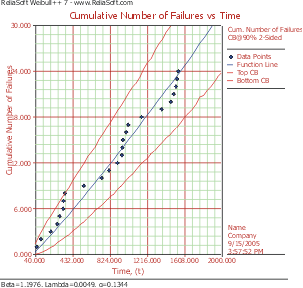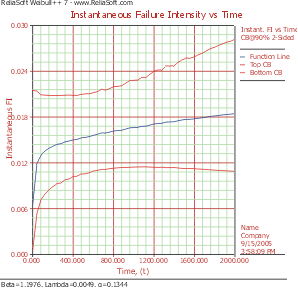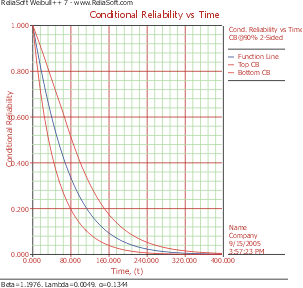Template:Example: Recurrent Events Data Parameteric Air-Condition Example
Jump to navigation
Jump to search
Parametric RDA Example
The following table gives the failure times of the air-condition unit of an aircraft. The observation is ended by the time of the last failure [3].
- 1. Estimate the GRP model parameters using the Type I virtual age option.
- 2. Plot the failure number and instantaneous failure intensity vs. time with 90% two-sided confidence bounds.
- 3. Plot the conditional reliability vs. time with 90% two-sided confidence bounds. The mission start time is 40 and mission time is varying.
- 4. Using the QCP, calculate the expected failure number and expected instantaneous failure intensity by time 1800.
Solution
Enter the data into a Parametric RDA Specialized Folio in Weibull++. Choose 3 under Parameters and Type I under Settings. Keep the default simulation settings.
- 1. The estimated parameters are [math]\displaystyle{ \hat{\beta }=1.1976, }[/math] [math]\displaystyle{ \hat{\lambda }=4.94E-03, }[/math] [math]\displaystyle{ \hat{q}=0.1344 }[/math] .
- 2. The failure number and instantaneous failure intensity are given in the following plots.
- 3. The conditional reliability is plotted below.
- 4. Using QCP, the failure number and instantaneous failure intensity are:


